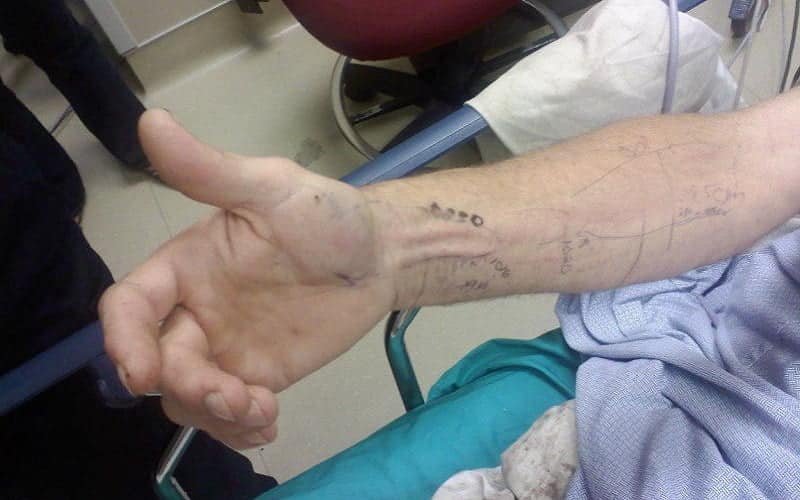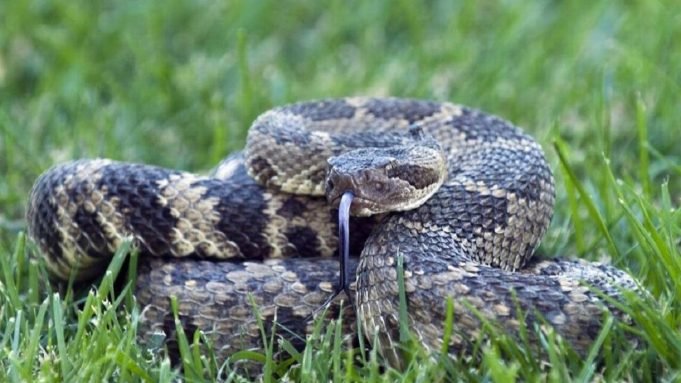When hiking in regions where rattlesnakes are present, it’s essential to be well-prepared and knowledgeable about how to respond in the event of a rattlesnake bite. Understanding how to recognize rattlesnake bites, taking immediate steps, seeking medical assistance, comprehending available treatments, and employing preventive measures can significantly improve your chances of dealing with the situation effectively. This guide aims to provide valuable insights on what to do if bitten by a rattlesnake while hiking and ensure your safety and overall well-being.
Recognizing rattlesnake bites is of utmost importance as it helps gauge the seriousness of the situation. The indicators and symptoms of a rattlesnake bite may vary but typically encompass intense pain, swelling, redness, and puncture wounds. Being able to identify the distinctive mark left by a rattlesnake bite can assist in confirming the likelihood of a venomous bite and directing appropriate responses.
Brief Overview of Rattlesnakes
Rattlesnakes are a group of venomous snakes predominantly found in the Americas, from southern Canada to central Argentina. Recognizable by their distinctive tail rattle, these reptiles use it as a warning to potential predators and threats. The rattle is made up of interlocking segments, which are added each time the snake sheds its skin.
Rattlesnakes are pit vipers, possessing heat-sensing pits located between their eyes and nostrils, which aid them in detecting warm-blooded prey. Their venom is a complex mix of enzymes that can cause serious harm or even be fatal to humans. However, they usually bite only when threatened or provoked. Conservation measures are essential as some species face habitat loss and other threats.
Read More: How to Pack a Backpack for Hiking
Immediate First Aid Steps
Experiencing a Rattlesnake bite, especially in a remote location, can be a terrifying ordeal. Yet, your actions in the immediate aftermath can play a significant role in influencing the outcome. Here’s a step-by-step guide on what you should do:
Stay Calm and Reduce Panic
If bitten, the first and most crucial step is to remain calm. Panic can accelerate your heartbeat, which could potentially spread the venom more quickly throughout your body.
Significance of Keeping Heart Rate Down
A lower heart rate means slower venom spread. By staying calm and keeping your heart rate down, you give yourself a better chance to reach medical help before the venom spreads extensively.
Do NOT Try to Suck Out the Venom
Contrary to some old myths, attempting to suck out the venom is ineffective and can introduce bacteria from your mouth into the wound, leading to infection.
Remove Tight Clothing or Jewelry Near the Bite Area
Swelling is a common reaction to snakebites. Tight clothing or jewelry can become constrictive and cause further complications as the affected area swells.
Keep the bitten limb immobilized and at or slightly below heart level
By immobilizing the bitten limb, you reduce the chances of the venom spreading quickly. Keeping it at or slightly below heart level further reduces the speed at which the venom travels through the body.
Explanation of venom spread prevention
The venom from a rattlesnake bite can cause tissue damage, blood clotting issues, and other systemic effects. Preventing its rapid spread helps buy time to get to a medical facility and can reduce the severity of these effects.
Avoid using a tourniquet or cutting the wound
Older methods like using tourniquets or cutting the wound are now discouraged. They can cause more harm than good, potentially leading to the loss of a limb or exacerbating the bite’s effects.
What NOT to Do
If you find yourself or someone you know bitten by a rattlesnake, several instinctual reactions might seem like a good idea at the moment, but they can exacerbate the situation.
1. Do not use ice or cold compresses on the bite.
While it might seem logical to apply cold to a swelling wound, doing so can constrict blood vessels and localize the venom. This can intensify tissue damage around the bite area.
2. Avoid alcohol or caffeine.
Intuitively, you might want a strong drink to cope with the stress, but alcohol and caffeine can dilate blood vessels. This may potentially expedite the spread of venom throughout your body.
3. Do not try to capture the snake.
While it might seem useful to bring the snake in for identification, attempting to capture it can lead to further danger. Instead, take note of its appearance or, if safe to do so, snap a distant photo. Medical professionals often can discern the snake species through bite symptoms and appearance.
4. Do not waste time on remedies that don’t work or delay medical treatment.
Many commercial snakebite kits or folk remedies might claim effectiveness, but they can often do more harm than good. Your priority should be seeking professional medical attention immediately.
Read Also: Embarking on Epic Backpacking Adventures
Getting Help
Call 911 or emergency services immediately
If you or someone you know is bitten by a rattlesnake, the very first step is to call 911 or your local emergency services. Even if the bite does not seem severe, symptoms can progress rapidly, and it’s always better to err on the side of caution.
Instructions for giving clear location details
When calling for help, it’s crucial to provide clear details of your location. If you have a GPS or a smartphone, share the coordinates. If not, provide landmarks, trail names, the last known point on your hike, or any other descriptive details that can help rescuers locate you quickly.
Importance of seeking professional medical treatment ASAP
Rattlesnake venom can cause severe tissue damage, and clotting disorders, and even be life-threatening. The faster you receive medical attention, the better the chances of minimizing complications and ensuring a positive outcome.
The role of antivenom and where it’s administered
Antivenom is a treatment designed to neutralize the effects of snake venom. It is the most effective treatment for a venomous snakebite. However, it needs to be administered in a medical facility by professionals as the patient requires monitoring for potential allergic reactions and other complications.
If in a remote location, send someone for help or try to signal for assistance
If you’re in a location with no cellular service or you’re unable to call for help, send someone else from your group to get help if possible. If alone, use a whistle, mirror, or any signaling device you have to attract attention. In dire situations, creating noticeable markers or signals with clothing or other items can also be helpful.
Treatment and Medical Care

Once help arrives, or you reach a medical facility, here’s what you can expect:
Receiving antivenom: The primary treatment for a rattlesnake bite. Antivenom counteracts the toxins in the snake’s venom. It’s vital to receive this as soon as possible to prevent or reduce the venom’s effects.
Monitoring for complications: A rattlesnake bite can have effects that manifest hours after the bite. Medical professionals will monitor for complications such as tissue damage, bleeding disorders, or reactions to the antivenom itself.
Importance of seeking professional medical care: Some rattlesnake bites can be “dry bites” where no venom is injected. However, it’s impossible to know this for sure without medical evaluation. Always seek professional care, even if the symptoms seem mild at first. The consequences of untreated venomous bites can be severe or even fatal.
Also Read: How to Pack a Hiking Backpack
Ways to Avert Rattlesnake Bites on Hikes
Preventive measures play a crucial role in safeguarding against rattlesnake bites during hiking expeditions. It is imperative to adopt the following strategies to effectively reduce the chances of encountering such incidents:
- Stick to designated hiking trails: Remaining on established paths significantly diminishes the likelihood of encountering snakes in their natural habitats. It is essential to be aware of the optimal timing for hiking the Inca Trail to minimize potential snake encounters.
- Dress Defensively: Wearing long trousers, sturdy socks, and proper hiking shoes forms a protective barrier, shielding you from potential bites.
- Exercise Caution in Specific Terrains: Snakes often reside in rocky or brush-filled areas. Treading cautiously in such spots helps in not disturbing or accidentally stepping on them.
- Employ a Hiking Stick: A hiking stick can be used to tap the ground ahead, acting as a warning for any concealed snakes.
- Stay Alert: Continually scan your surroundings. This vigilance helps spot snakes well in advance, allowing you to avoid them. Listen for the unique sound of a rattling tail.
- Respect Their Space: If you spot a snake, never approach or antagonize it. They’re likely to attack if they sense a threat.
- Ensure Pet Safety: When accompanied by pets, keeping them leashed prevents them from straying into areas where snakes might be lurking.
- Maintain Composure During Encounters: If you find yourself near a rattlesnake, staying calm and steadily retreating is the best approach.
- Prioritize Medical Care After Bites: In the unfortunate event of a bite, rush to get medical attention, even if unsure about the snake’s venomous nature. Immediate care is paramount to avert severe repercussions.
By diligently integrating these preventive measures into your hiking routine, you can relish your escapades with a significantly reduced risk of encountering rattlesnake mishaps.
Aftercare
Follow all Medical Advice and Instructions
Once you have received medical treatment for a rattlesnake bite, it’s crucial to adhere to all the advice and instructions given by healthcare professionals. This may include taking prescribed medications, wound care, follow-up visits, and physical therapy.
Monitor for Signs of Infection or Complications
The site of a snakebite can sometimes become infected. Be vigilant and look for signs of increased redness, swelling, pus, or if the wound becomes warm to the touch. Additionally, monitor for fever or any other unusual symptoms. If you notice any of these signs, seek medical attention immediately.
Consider a tetanus shot if you haven’t had one in the last 5 years
Snakebites can introduce bacteria into the body, which might lead to tetanus, a severe bacterial infection. If you haven’t had a tetanus shot in the last 5 years, discuss with your healthcare provider about getting one as a precautionary measure.
Psychological Aspects: dealing with the fear after a bite
A rattlesnake bite can be a traumatic experience, leading to feelings of fear, anxiety, or even post-traumatic stress. Recognize that these feelings are valid. Consider seeking support from professional counselors or therapists who can provide coping strategies. Connecting with support groups of individuals who’ve had similar experiences can also be beneficial.
You Can Read: How Should Hiking Boots Fit
Conclusion
Nature offers an unparalleled experience, but with its beauty comes inherent risks. Knowing potential dangers, like rattlesnakes, and being prepared can make a significant difference in ensuring safe and enjoyable adventures.
A rattlesnake bite, while daunting, doesn’t have to be fatal. Taking the right steps immediately after a bite and seeking professional medical assistance can drastically improve outcomes. Every second counts. Armed with knowledge and a clear plan of action, you can navigate such emergencies effectively. Always prioritize safety, stay informed, and remember that the best way to deal with a snakebite is to prevent it in the first place.
















[…] Read More: What to Do If Bitten by a Rattlesnake While Hiking […]
Comments are closed.